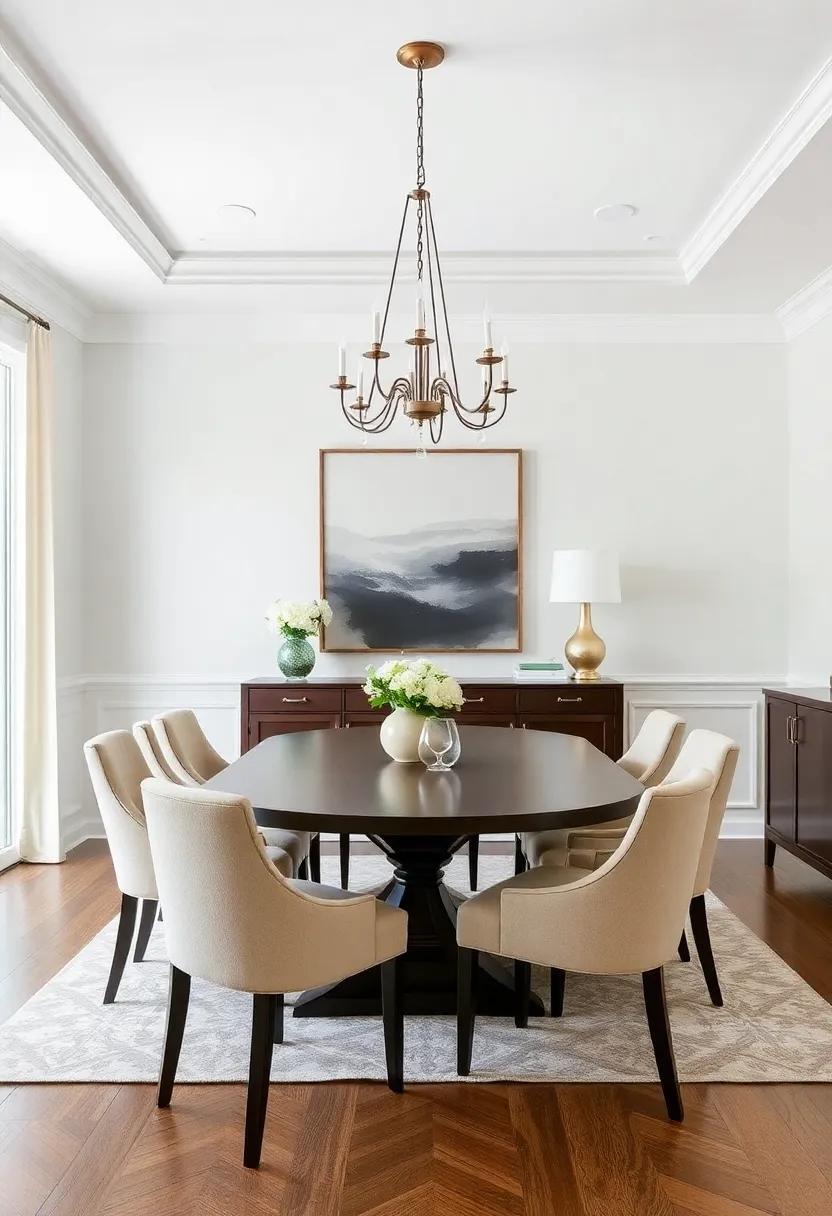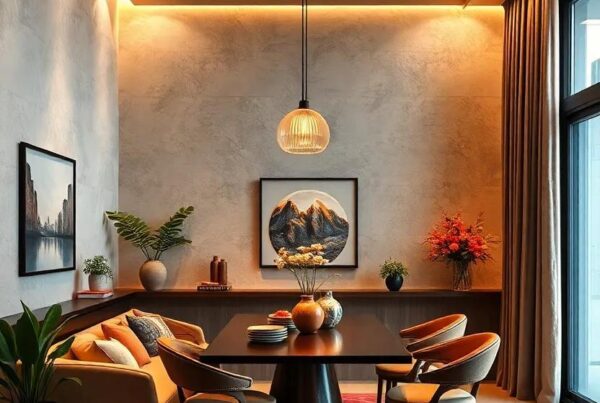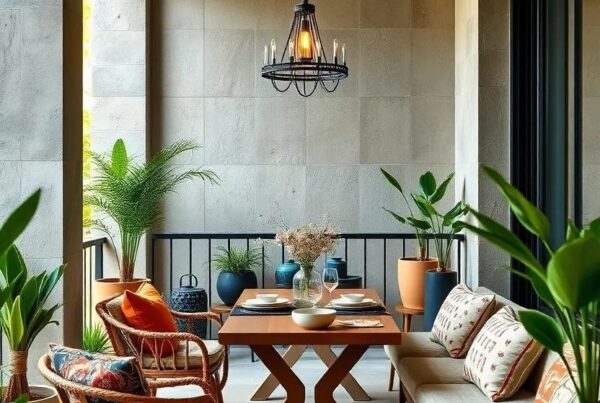In the realm of interior design, the dining room serves as a vital space where functionality meets artistry, blending the necessity of everyday dining with the sophistication of stylish entertaining. As design trends evolve, one approach stands out for its ability to harmonize the old with the new: transitional style.This aesthetic masterfully intertwines classic elegance with modern sensibilities, creating dining spaces that feel both timeless and fresh. In this exploration of transitional dining room styles, we will delve into the elements that define this captivating blend, uncovering how color palettes, textures, and furnishings come together to create inviting atmospheres. join us on a journey through these seamlessly curated spaces, where each detail tells a story and every meal becomes an occasion to remember.
embracing the Harmony of Traditional and Modern Dining Room Aesthetics
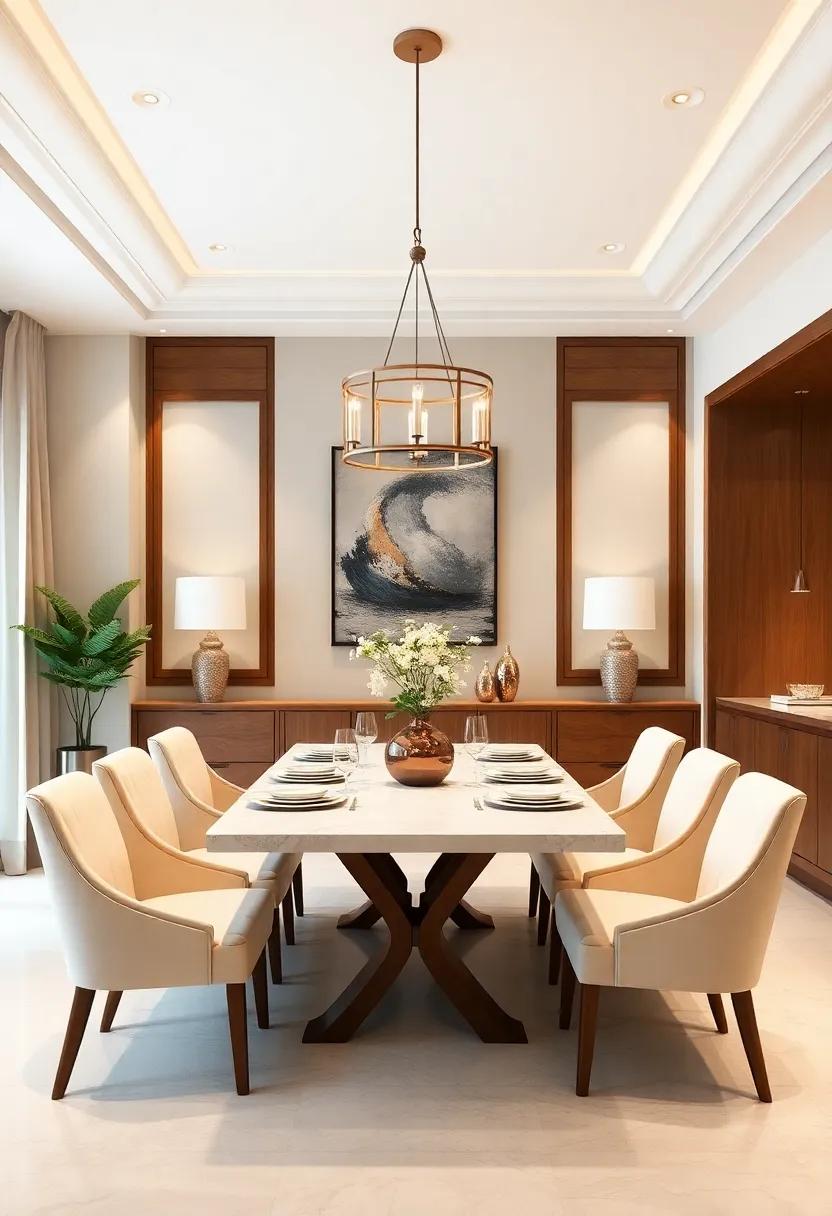
In today’s design landscape, the subtle interplay between traditional and contemporary elements creates a stunning backdrop for dining experiences. By combining classic motifs with sleek, modern lines, homeowners can cultivate a space that feels both rooted in history and refreshingly up-to-date. Key features to consider include:
- Furniture Fusion: Look for dining tables that marry old-world craftsmanship with contemporary materials like glass or metal.
- Color Palette: A warm, neutral base with splashes of vibrant modern shades can bridge the gap between eras.
- Lighting Choices: Mix vintage chandeliers with minimalist pendant lights to create a dynamic visual narrative.
Another vital aspect is the choice of decor, where layers of texture and visual intrigue enhance the aesthetic. Incorporating traditional accents, such as ornate table linens or heirloom ceramics, alongside sleek, modern decorative pieces brings depth and invites conversation.A thoughtfully arranged display of contrasting styles can create a harmonious table setting that feels curated and personal. Consider incorporating:
| Element | Traditional Touch | Modern Twist |
|---|---|---|
| Tableware | Classic china | Sleek ceramic or matte finishes |
| centerpiece | Vintage vase | Geometric terrarium |
| Seating | Wooden chairs with upholstery | Metal or acrylic stools |
Inviting Warmth into Transitional Dining Spaces with Natural Textures

Transitioning the dining space into a warm haven involves embracing natural textures that foster a cozy ambience. Incorporating elements such as wood, wicker, and textiles can significantly elevate the aesthetic while providing tactile comfort. The use of rich,earthy tones in furniture—like a reclaimed wood dining table or woven seating—invites a rustic charm that pairs beautifully with the elegance of transitional style. Layering different materials, such as a soft fabric table runner atop a robust wooden table, creates visual interest and adds depth to the setting.
Bringing nature indoors can be achieved through carefully curated décor choices, such as:
- Natural fiber rugs: Ideal for enhancing warmth and texture.
- Live plants: adding greenery can breathe life into the space.
- Ceramic or terracotta accents: These provide rustic elegance and earthy tones.
By selecting pieces that resonate with authenticity and charm,transitional dining spaces can exude a harmonious blend of sophistication and comfort,making them ideal for both everyday meals and elegant gatherings.
Creating a Balanced Palette: Color Choices for Transitional Dining Rooms
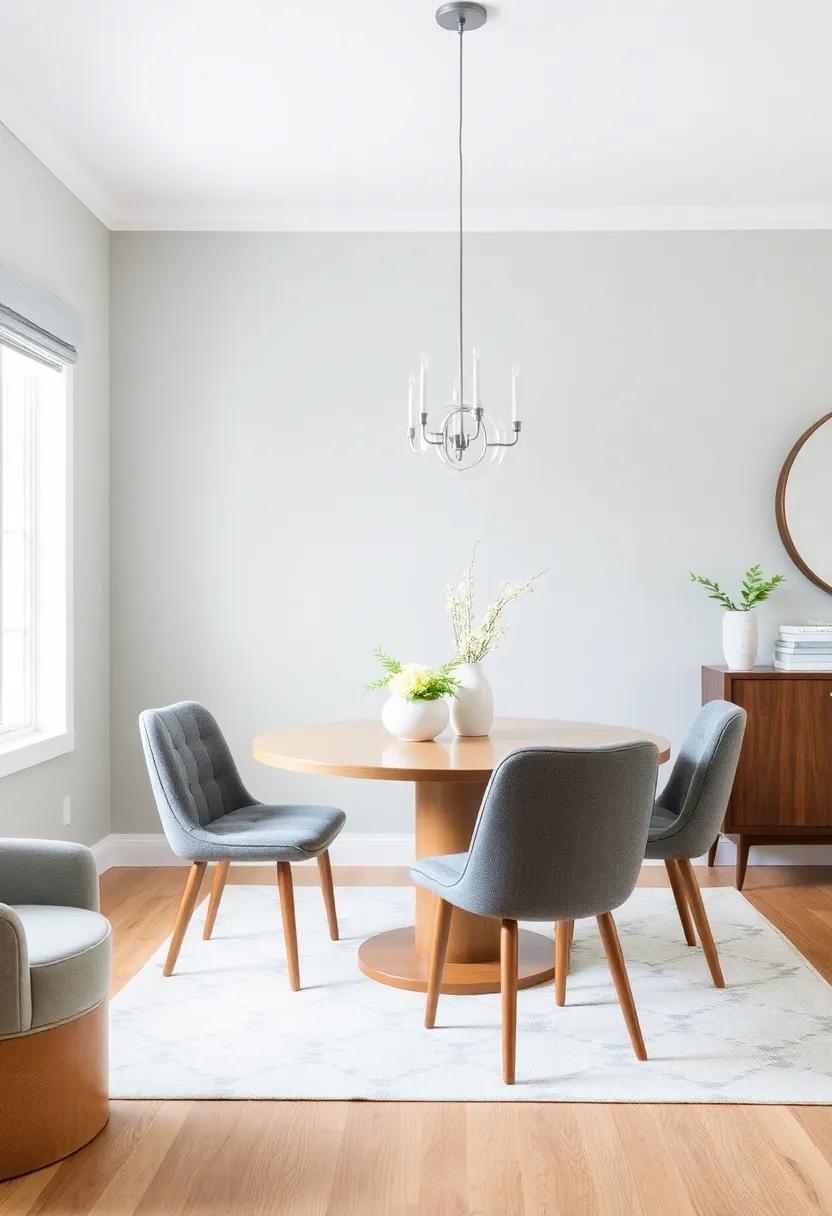
When designing a transitional dining room, the essence lies in creating a balanced palette that marries comfort with sophistication. Opting for a mix of neutral shades can provide a calming foundation, while occasional bold accents introduce character. Consider a base of soft grays or warm beiges, which can set the stage for striking colors like deep navy or rich emerald green.To add depth and interest,incorporate textures such as wood,metal,or fabric finishes that reflect light and evoke a sense of luxury.
To seamlessly blend these colors, think in terms of color family groupings. Choose a primary color, then select a few complementary shades to enhance the room’s depth. Here are some color combinations that can elevate the aesthetic of a transitional dining space:
| Primary Color | Complementary Shades |
|---|---|
| Soft Gray | Charcoal, Silver, Dusty Blue |
| Warm Beige | Cream, Olive Green, Rust |
| Deep Navy | Mustard Yellow, Warm White, Coral |
| Rich Emerald | Ivory, Soft Peach, Dark Walnut |
These palettes not onyl create visual harmony but also allow for creativity in accessory choices, such as artwork, table settings, and upholstery. By thoughtfully selecting and balancing colors, a transitional dining room can embody elegance while remaining inviting and functional.
The Role of Lighting in Enhancing Transitional Dining Room Ambiance

Lighting serves as a transformative tool in defining the character of a transitional dining room, melding traditional charm with contemporary flair. the careful selection of fixtures not only illuminates but also creates a captivating atmosphere that enhances the overall dining experience. Consider incorporating a mix of overhead fixtures and ambient lighting that spotlight both functionality and artistry. For example,a statement chandelier can serve as a focal point,while wall sconces gently cast light upon textured surfaces,achieving a layered effect that feels cozy and inviting.
When selecting lighting, think about how the intensity, color, and placement will interact with your dining space.Warm-toned bulbs can evoke a sense of warmth and intimacy, perfect for gatherings, while adjustable dimmers allow you to set the mood according to the occasion. Here’s a quick guide to lighting components that can enhance your room:
| Lighting Type | Effect |
|---|---|
| Chandeliers | Creates a dramatic focal point |
| Wall Sconces | Adds depth and texture |
| Table Lamps | Provides soft, localized light |
| recessed Lighting | Subtle illumination that expands space |
Integrating varied lighting elements fosters a dynamic and inviting ambiance, promoting both comfort and style. Keep in mind that the art of layering light not only brings out the beauty of your chosen decor but also encourages conversations and memorable dining moments.
Furniture Selection: Blending Classic and Contemporary Elements Effortlessly
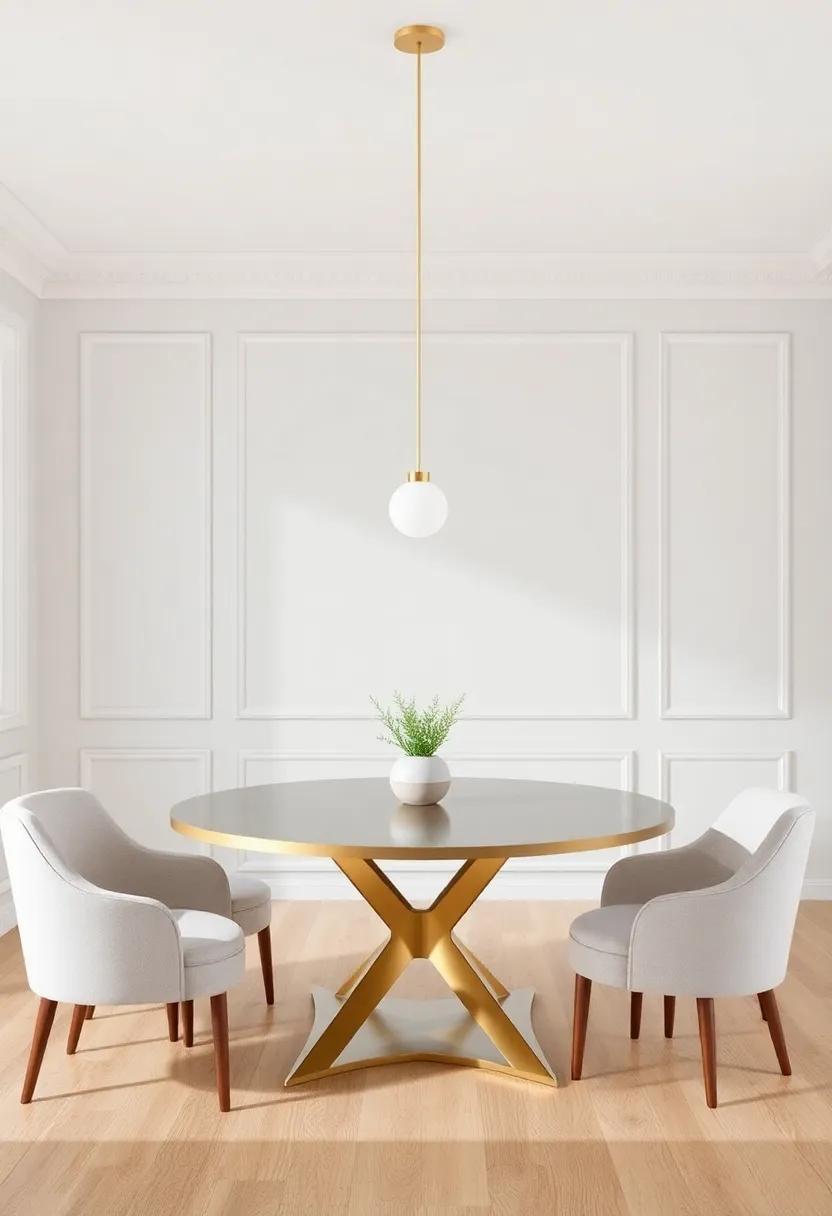
Creating a dining room that beautifully marries classic and contemporary styles requires a keen eye for selection. Begin by choosing furniture pieces that echo the timelessness of classic design while incorporating the sleek lines and minimalism of contemporary aesthetics. Look for tables made from rich woods paired with modern metal accents, or opt for chandeliers that feature traditional silhouettes but utilize modern materials such as glass or polished nickel. This blend contributes to a harmonious atmosphere, allowing the space to feel both inviting and elegant.
When considering seating options, aim for a mix of upholstered chairs with modern prints alongside elegantly carved wooden options. To elevate the transitional theme, include elements like vintage sideboards that juxtapose with minimalist decor styles. Consider the color palette as well; neutral tones accented by bold hues can capture the essence of both eras. Organizing the furniture arrangement to promote flow while highlighting key design elements will ensure that your dining area remains both functional and aesthetically pleasing.
Exploring the Impact of unique Dining Table Designs in Transitional spaces

In the realm of transitional spaces, dining tables serve not just as functional pieces, but as artistic statements that bridge the gap between contemporary minimalism and classic design. Unique dining table designs enhance the aesthetic appeal, prompting conversation and inviting warmth into the home. Elements such as organic shapes, contrasting materials, and textural nuances are integral, allowing these tables to stand out while harmonizing with surrounding decor. The combination of sleek, modern lines with rustic finishes can create a cohesive narrative that celebrates both old-world charm and modern flair.
Consider the variety of materials that can be employed in crafting these stunning pieces, ranging from reclaimed wood that tells a story to polished metals that reflect light and elevate the ambiance.The impact of well-chosen dining tables extends into lifestyle as well; they become the backdrop for gatherings, celebrations, and intimate dinners. To illustrate this blend of style and functionality, here’s a brief overview of some popular dining table designs ideal for transitional settings:
| Design Type | Materials | Key Features |
|---|---|---|
| Live Edge | Reclaimed Wood | Organic Shape, Unique Grain |
| Marble Top | Marble & Metal | Sleek Finish, High Contrast |
| Round pedestal | wood with Metal Accents | Space-Saving, Flexible Seating |
| Glass Top | Glass & Wood Frame | Light-Reflective, Airy Feel |
Artful Displays: Integrating Personal Touches into Your Dining Room
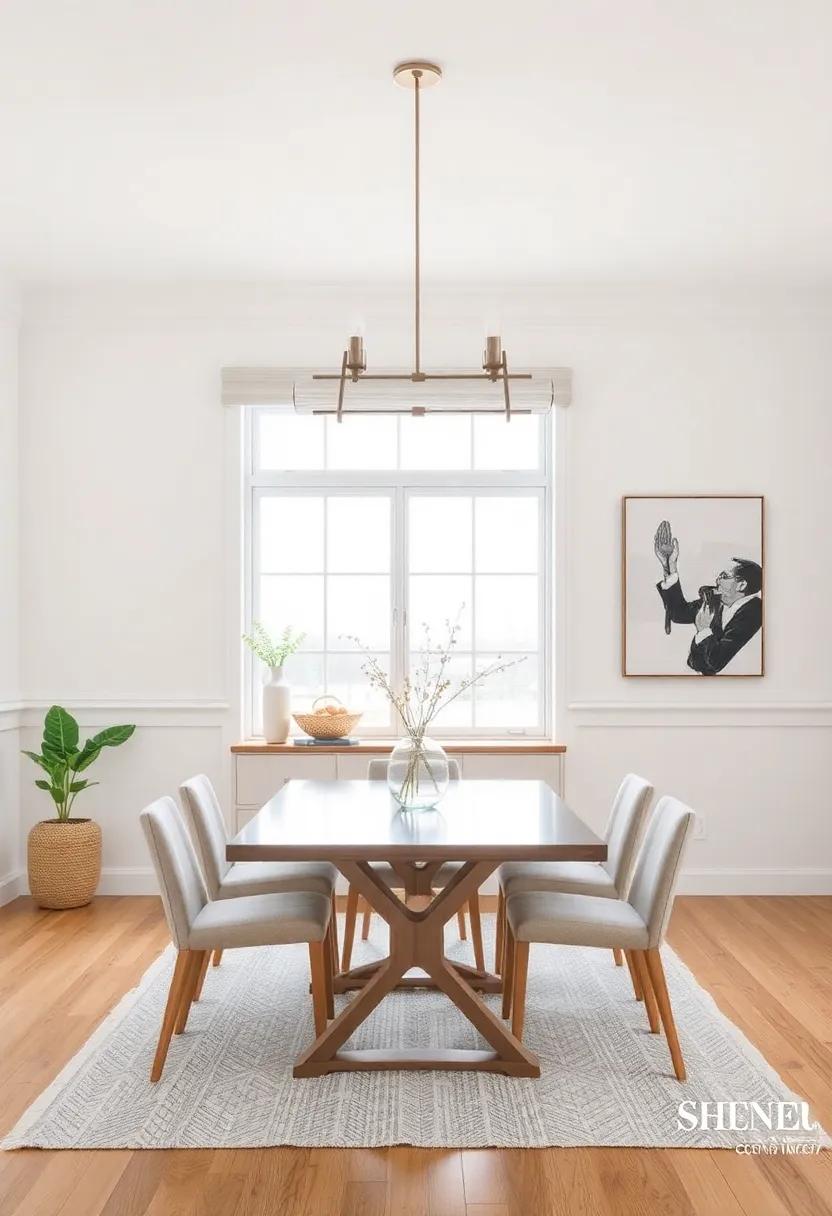
Infusing your dining room with personal touches is a delightful way to articulate your style and create an inviting atmosphere.Consider incorporating items that spark joy and tell a story, such as vintage heirlooms, eclectic art pieces, or travel souvenirs. these elements can serve as conversation starters while enriching the overall aesthetic. To strike the right balance between elegance and personality, focus on the following:
- Wall Art: Choose framed photographs or original artwork that resonates with you.
- Centerpieces: Use unique table arrangements, like a mix of flowers and meaningful artifacts.
- Textiles: Incorporate custom or layered textiles, such as personalized table runners or seasonal placemats.
Understanding how to curate these personal touches in a refined manner can enhance the sophistication of your space without overwhelming it. Consider organizing your decorative elements strategically; look at a variety of shapes and sizes to create visual interest. A handy reference guide for integrating personal touches while maintaining elegance could be:
| Display Type | Example | Tip |
|---|---|---|
| Gallery Wall | Family photos in cohesive frames | Mix sizes for an eclectic look |
| Curated Shelves | Books mixed with collectibles | Group by color or theme |
| Table Settings | Custom dishware or personalized napkins | Match styles to your decor |
Flooring Options that Complement Transitional Dining Room styles
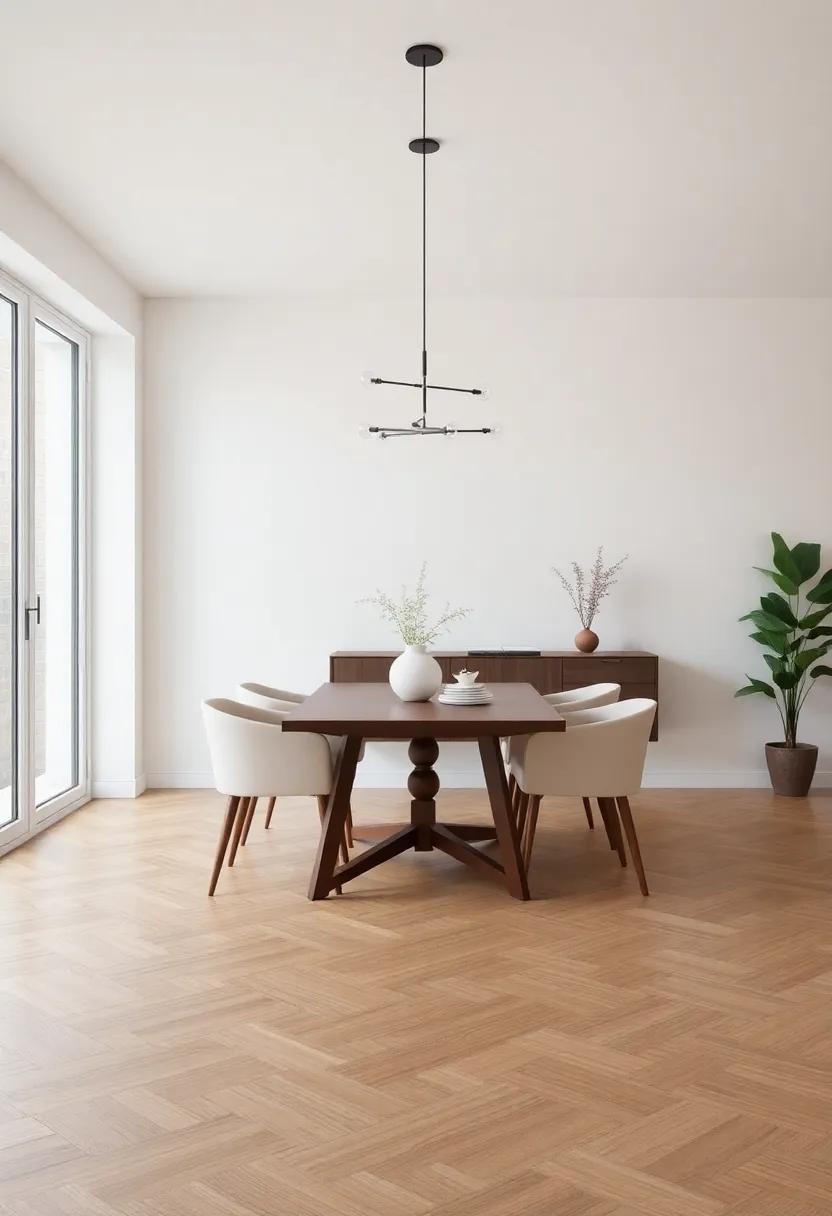
When crafting a transitional dining room, the flooring you choose can enhance the room’s elegance and functionality. Hardwood floors remain a top choice, offering a classic warmth that complements both traditional and modern elements.Opting for a polished finish in rich tones like walnut or cherry can add depth, while lighter shades such as maple or ash create a brighter atmosphere. For a more casual but stylish appeal, consider wide plank flooring; this can create a sense of space and continuity that suits transitional décor beautifully.
Beyond hardwood, luxury vinyl and laminate offer practical and stylish alternatives that mimic the look of wood or stone without the maintainance. These materials are often more resistant to scratches and moisture, perfect for a dining area where spills can occur. Additionally,ceramic tiles in neutral colors or soft earth tones can provide a striking floor while allowing for intricate patterns or textures that contribute to the room’s layered appearance. Ultimately, selecting flooring that balances durability with aesthetic appeal will set the foundation for a stunning dining experience.
Textiles and Fabrics: Layering Comfort in Transitional Dining Design
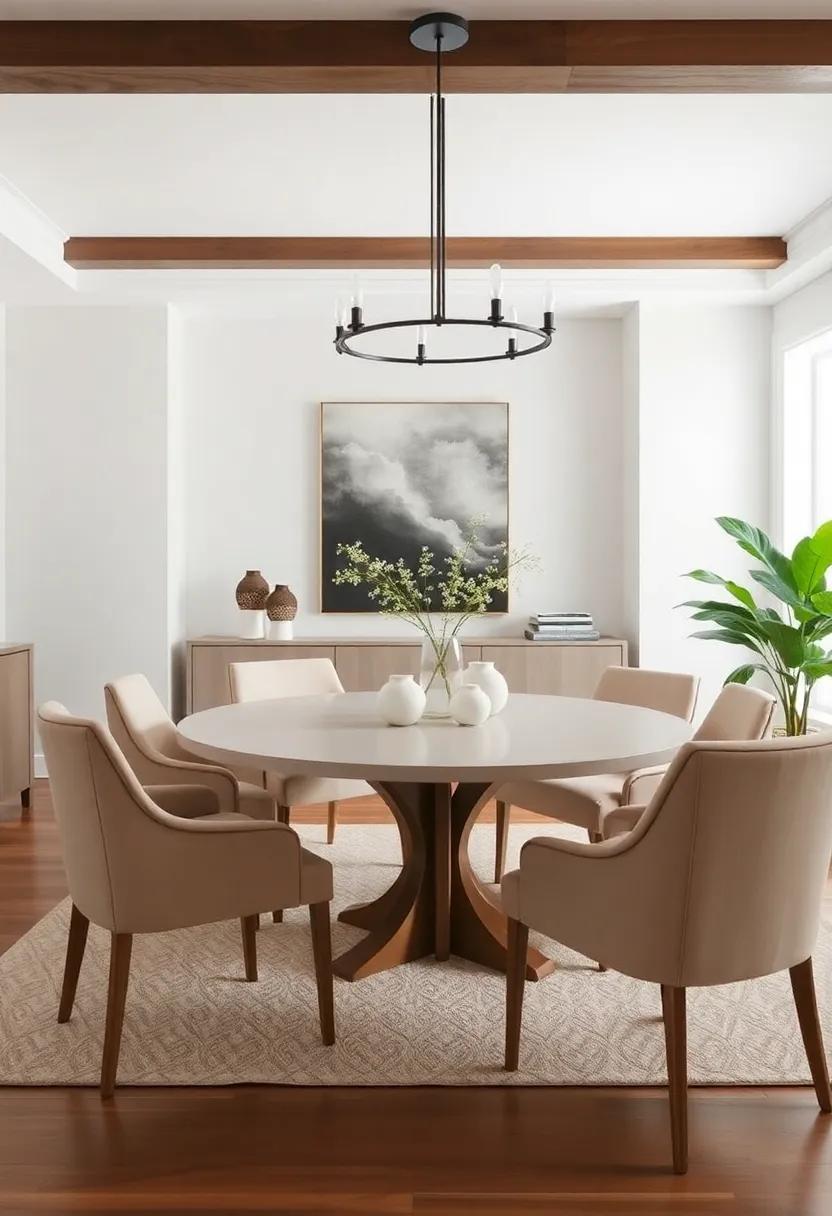
when it comes to crafting a refined dining habitat, textiles and fabrics play a pivotal role in enhancing both aesthetics and comfort. The essence of transitional design lies in blending the sleek lines of modern elements with the warmth of traditional touches. Luxurious upholstery on dining chairs not only provides a soft seating experience but also adds a layer of sophistication. Consider options like:
- linen: Breathable and elegant,perfect for both casual and formal dining.
- Velvet: Rich and plush, bringing a touch of luxury to your dining experience.
- Cotton blends: Durable yet soft, ideal for everyday dining while remaining stylish.
To create visual interest, layering fabrics can dramatically elevate a dining space. Table runners, placemats, and napkins in complementary or contrasting textures can bring character and depth to your dining table.A selection of patterns can also enhance the transitional theme by marrying classic motifs with contemporary designs. Consider this simple table showcasing fabric choices:
| Fabric Type | Characteristics | Ideal Use |
|---|---|---|
| Linen | Lightweight, crisp finish | Tablecloths |
| Twilight Velvet | Soft, rich texture | Chair upholstery |
| Patterned Cotton | Durable, colorful | Napkins and placemats |
Accessorizing with purpose: Dishes, Decor, and More in Your Dining Room
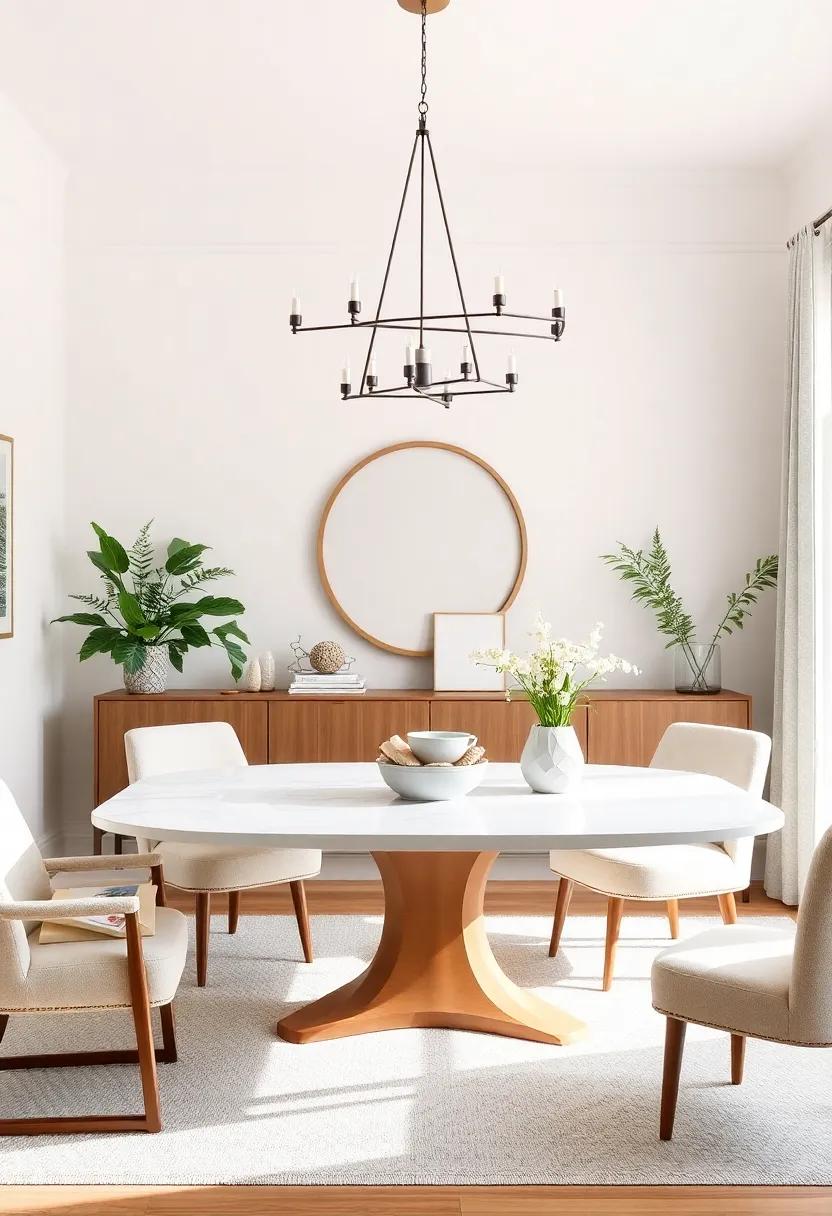
Creating a dining room that speaks to both style and function involves selecting dishes,decor,and accessories that reflect your personal taste while seamlessly integrating into the overall design. Begin with your dinnerware; opt for versatile pieces that can transition smoothly from casual family meals to elegant gatherings. Using a muted, neutral palette paired with metallic accents can evoke a feeling of timeless sophistication. Consider incorporating dishware that combines both classic and modern elements,such as rounded plates with geometric patterns or vintage-inspired glassware. This approach not only enhances the visual appeal but also provides a cohesive flow to your dining space.
Beyond dinnerware, decor plays a pivotal role in establishing an inviting atmosphere. Select centrepieces that complement your furnishings—such as a striking vase filled with seasonal flowers,or a cluster of decorative bowls that add texture. Lighting is essential; a statement chandelier not only illuminates but also serves as a conversation starter.Don’t overlook wall art or mirrors, which can create depth and reflect light, amplifying the elegance of your space. Here are some accessories that can enhance your dining experience:
- Candles: Add warmth and ambiance.
- Table runners: Introduce color and pattern.
- decorative trays: Organize and elevate the dining setting.
Exploring Color Schemes that Evoke elegance and Modernity in Dining Rooms
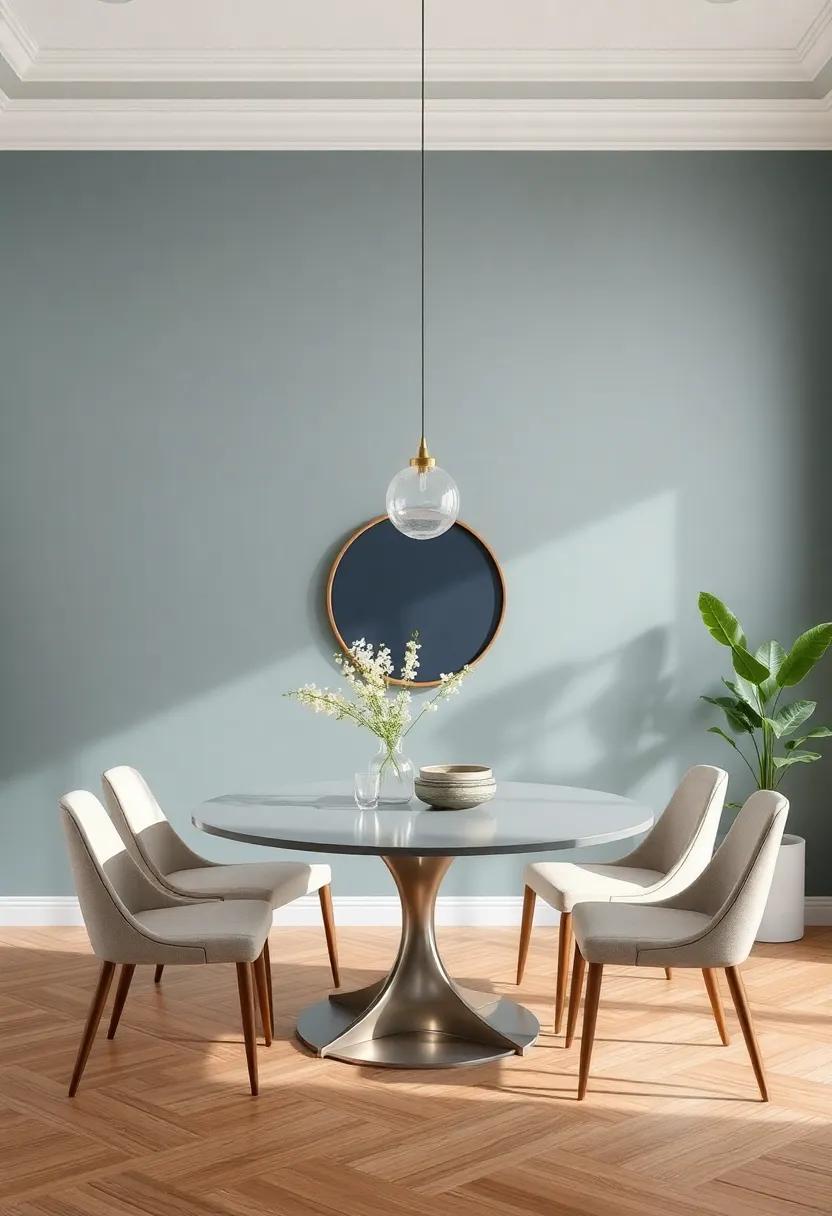
When it comes to creating a dining room that exudes both elegance and modernity, color scheme choices play a pivotal role. The combination of rich jewel tones with sleek neutrals can instantly uplift the ambiance. Consider pairing deep emerald greens or royal blues with soft grays or creamy whites. This juxtaposition not only enhances the room’s sophistication but also maintains a contemporary feel. To help visualize the possibilities,here are some key color pairings to consider:
- Emerald Green: complements perfectly with soft beige.
- Royal Blue: Pairs well with crisp white.
- Charcoal Gray: enhances light taupe for depth.
- Soft Lavender: Complements with muted ivory.
Additionally, incorporating metallic accents can further amplify the modern elegance of your dining space. Golds, silvers, or brushed nickels can add a touch of glamour without overwhelming the design. Here’s a simple visual guide to balancing these elements:
| Color Pairing | Metallic Accent | Texture Recommendation |
|---|---|---|
| Emerald Green & Beige | Gold | Velvet Upholstery |
| Royal Blue & White | Silver | Glass Elements |
| Charcoal Gray & Taupe | Brushed Nickel | Leather Accents |
| Soft Lavender & Ivory | Gold | Linen Textiles |
Nature-Inspired Elements: Bringing the Outdoors into Your Dining Experience

Infusing your dining area with elements inspired by nature can create a soothing atmosphere that enhances meal times. Consider materials like wood, stone, and natural fibers to bring a warm, organic feel into the space. You might opt for a wooden dining table with a live edge that showcases the beauty of the grain or incorporate rattan chairs that add texture and comfort.Accessories like a simple ceramic vase filled with fresh flowers or sprigs of greenery can create a vibrant focal point, drawing the beauty of the outdoors right into your home.
Furthermore, colors drawn from nature can influence your dining room palette, adding depth and a calming effect. Think about using hues like sage green, terracotta, and deep blues to create a tranquil and inviting atmosphere. Elements such as a nature-inspired centerpiece or muted, earthy tableware harmonize beautifully with transitional aesthetics.To achieve a cohesive look, consider the color theme and materials in synergy, ensuring each piece complements the overall ambiance of your dining experience.
| Nature-Inspired Elements | Impact on Dining Experience |
|---|---|
| Wooden Tables | Warmth and familiarity |
| Natural Fiber Chairs | Comfort and texture |
| Earthy Color Palette | Calming ambiance |
| Botanical Centerpieces | Vibrancy and freshness |
The Importance of Scale and Proportion in Transitional Dining Room Layouts

Creating a transitional dining room that harmoniously blends various design elements relies heavily on the concepts of scale and proportion. The furniture, decor, and architectural features must work together to establish a cohesive look that is both inviting and functional. When selecting a dining table, it is indeed essential to ensure that its size complements the room without overwhelming it. A well-proportioned table encourages a natural flow and allows for pleasant movement around the space. Consider these key factors:
- Table Dimensions: Match your table size to the room dimensions for optimal balance.
- Chair Style: Choose chairs that are appropriately scaled to enhance comfort and aesthetics.
- Lighting Fixtures: Select hanging fixtures that complement the table’s height and room’s ceiling.
Along with furniture, incorporating decor elements in proportion boosts the inviting nature of a dining room. Art, centerpieces, and wall treatments should resonate with the overall scale, maintaining a sense of unity. Integrating oversized artwork or a large mirror can create a focal point that draws the eye, while smaller decor pieces can be grouped together for a layered look. Understanding the balance of these elements is crucial. Helpful tips include:
- Varying Heights: Mix tall and short decor items to create visual interest.
- Negative space: Allow for breathing room around elements to avoid a cluttered feel.
- Color Coordination: Use a consistent color palette to unify various pieces effortlessly.
Understanding the Influence of Architectural Features on Dining Spaces

Architectural features play a pivotal role in defining the ambiance and functionality of dining spaces. These elements can create a framework that enhances the overall aesthetic while complementing the dining experience. Columns, archways, and ceiling beams can serve as focal points, drawing the eye and guiding the flow of space. Furthermore, large windows not only allow natural light to flood in but can also frame picturesque views, connecting the dining area to the outdoors.Incorporating these features promotes a sense of openness and can make even smaller spaces feel more expansive.
When considering the arrangement of furniture in a dining area,its essential to marry it with the architectural elements present. A long dining table can work harmoniously beneath a vaulted ceiling, while rounded tables might better suit a nook defined by arches. the interplay between these furniture choices and architectural features can enhance the dining experience dramatically. As an example, placing a statement chandelier beneath a high ceiling can impart a sense of grandeur, while using more intimate lighting fixtures in cozy corner nooks can create a warm, inviting atmosphere. Below is a simple overview of elements to consider:
| Architectural Feature | Ideal Furniture Type |
|---|---|
| High Ceilings | Long Dining Table |
| Arched Nooks | round Table |
| Large Windows | Bench Seating |
| Open Floor plan | Modular Sets |
Mixing Patterns and textures for a Dynamic Dining Room Vibe
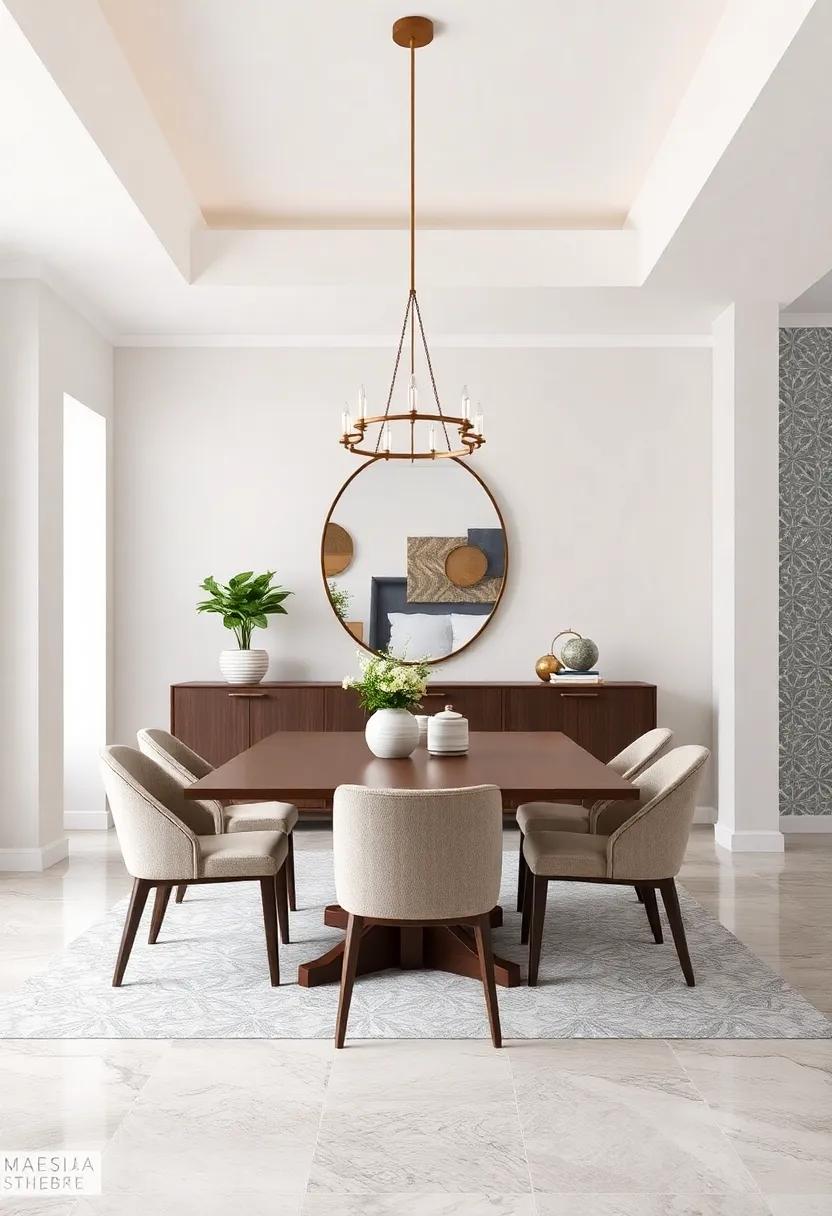
Creating a dynamic atmosphere in your dining room hinges on the equilibrium of patterns and textures.Bold geometric prints can be beautifully juxtaposed with soft, organic shapes to evoke a sense of comfort and modernity. consider incorporating these elements:
- textured Fabrics: Use linen or velvet for curtains and upholstered chairs to add depth.
- Patterned Tableware: Introduce plates or table linens with intricate designs for visual interest.
- Area Rugs: Layer rugs in contrasting patterns to define spaces and soften hard floors.
Moreover, a strategic mix of color can enhance the vibrancy of your dining experience. Opt for a cohesive palette that includes bold accent colors alongside neutral tones. Try integrating:
| Color | Feel |
|---|---|
| Deep Blue | Calm and inviting |
| Mustard Yellow | Warm and cheerful |
| Classic White | Timeless and clean |
The Beauty of Open Concept: Merging the Dining Room with Other Living Areas
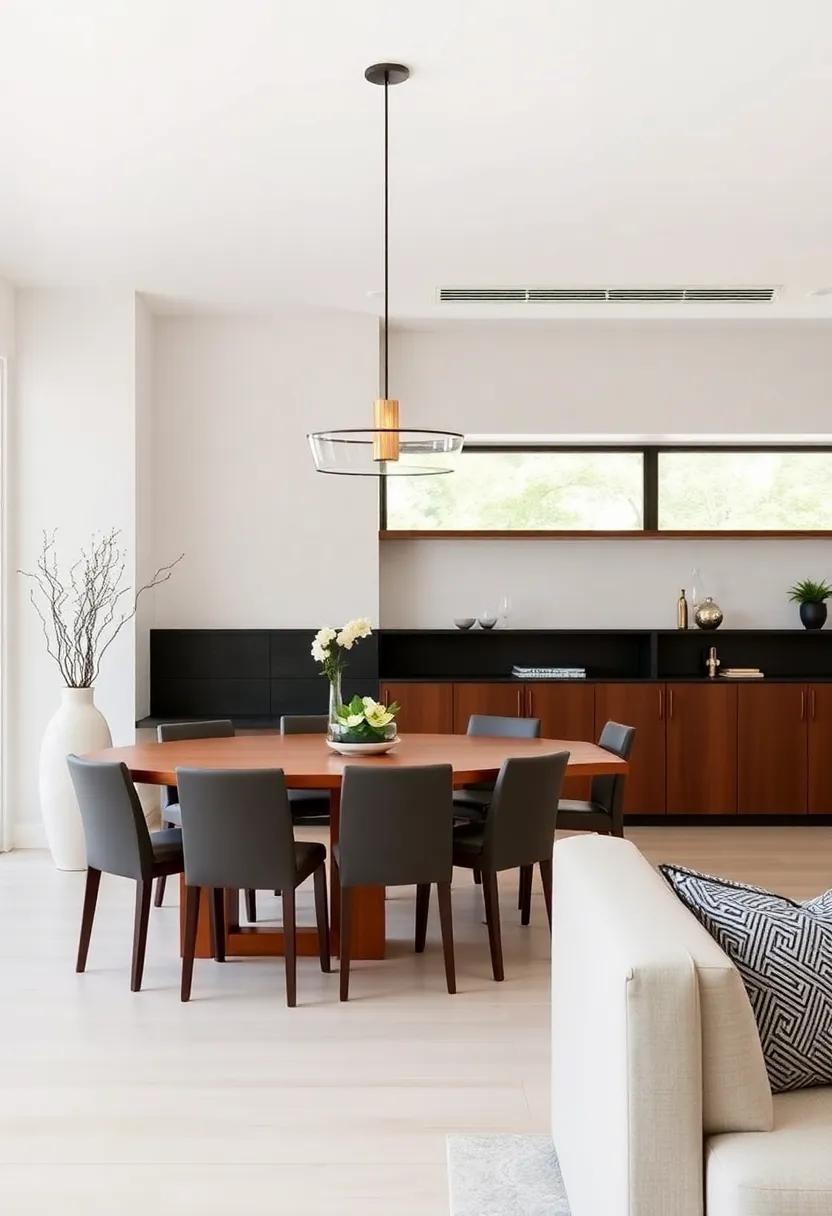
Open concept living has transformed the way we perceive space in our homes, allowing for a seamless flow between the dining area and adjacent living spaces.This architectural trend emphasizes versatility and connection, creating an inviting atmosphere where family and friends can gather without the constraints of traditional room divisions. The fusion of different zones enables creativity in decor, with dining room features blending harmoniously with the living room. Imagine enjoying a meal while embracing the warmth of a cozy fire or conversing with guests lounging just a few steps away. This modern approach nurtures interaction and engagement, making it ideal for both everyday life and special occasions.
to maximize the aesthetic appeal of combined spaces, consider incorporating these design elements:
- consistent Color Palette: Use complementary colors across both areas for visual unity.
- Shared Flooring: Choose the same flooring materials to create an uninterrupted look.
- Decorative Lighting: Statement lighting fixtures can delineate spaces while adding elegance.
- Multi-Function Furniture: Select pieces that serve multiple purposes, such as benches that double as storage.
| Element | Functionality |
|---|---|
| Dining Table | Central gathering spot for meals and conversations |
| Sofa | Comfortable seating that encourages relaxation |
| Accent Chair | Adds style and extra seating without clutter |
| Rug | Defines the dining area within the larger space |
Timeless Lighting Fixtures that Anchor Your Transitional Dining Room Style
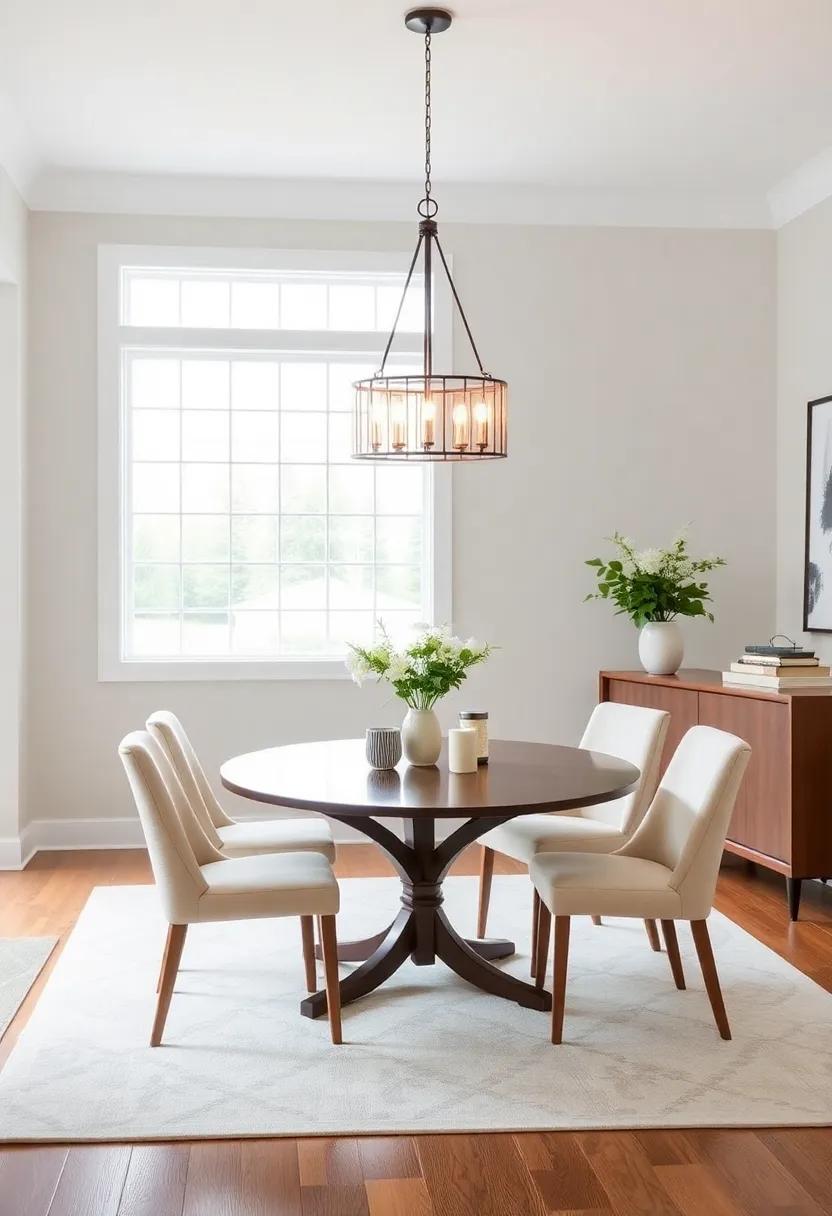
In the realm of transitional dining room design, the right lighting fixtures play a critical role in harmonizing both classic and contemporary elements. These fixtures not only illuminate the space but also serve as artistic focal points that enhance the overall aesthetic. When selecting timeless lighting options, consider features such as organic shapes, elegant finishes, and versatile designs that can adapt to evolving styles. Popular choices include:
- Chandelier—a classic silhouette updated with modern materials like matte black or brushed brass.
- Pendant Lights—these can hang above the dining table, adding depth while maintaining an airy feel.
- Wall Sconces—perfect for flanking architectural features, they provide ambient lighting while adding a layer of sophistication.
Moreover, utilizing a variety of lighting sources can create a warm and inviting atmosphere. Layered lighting, including ambient, task, and accent options, can be effectively achieved through a mix of floor lamps, table lamps, and dimmable fixtures. When selecting new pieces,consider their compatibility with existing décor elements to ensure a cohesive look. As a reference, the table below outlines popular materials and styles that can seamlessly blend into a transitional dining room.
| Material | Style |
|---|---|
| Brass | Industrial |
| Glass | minimalist |
| wood | Rustic |
| Metal | Modern |
Personalizing Your Space with Artwork that Reflects dining Room Themes
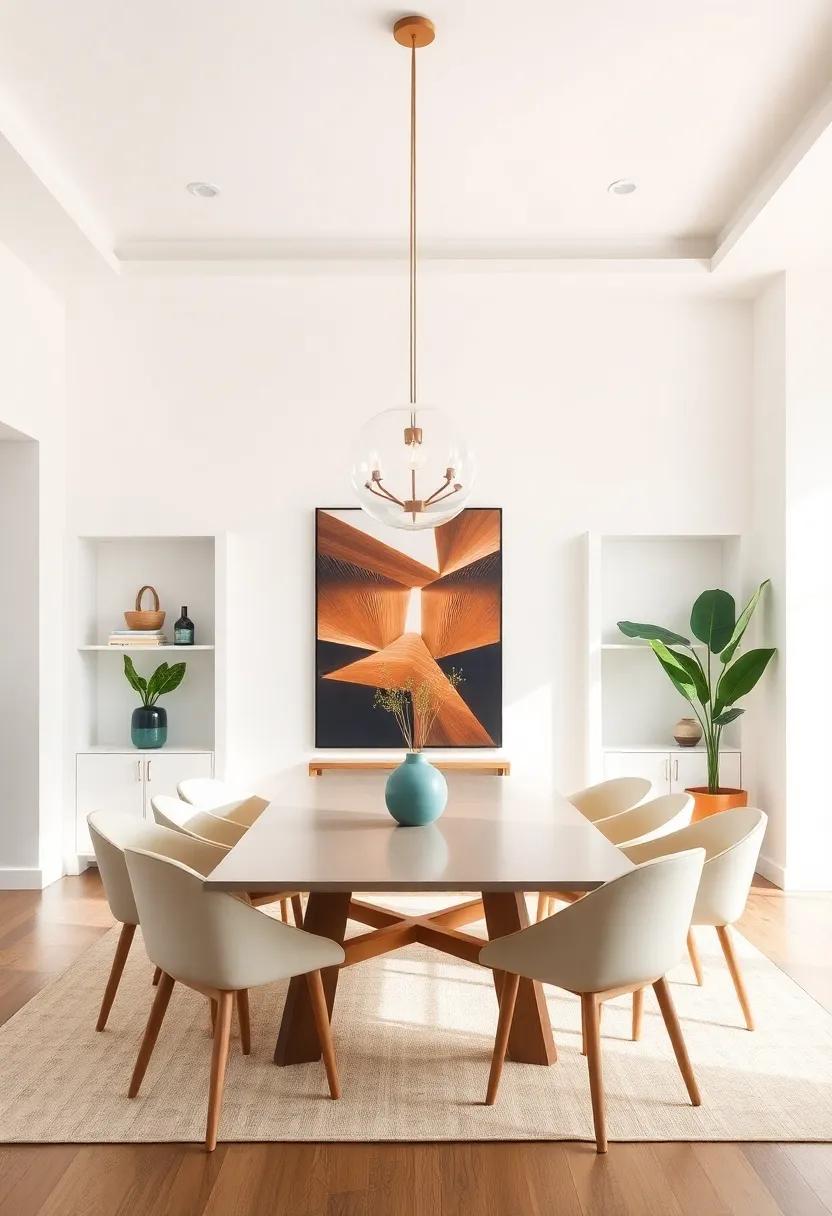
Choose artwork that resonates with the ambiance you desire for your dining space. Whether you gravitate towards a modern flair or a classic aesthetic, ensuring that the pieces you select complement the overall theme will enhance both style and comfort. Consider the following options for personalized touches:
- framed Prints: Opt for botanical or abstract prints that echo the colors found within your dining decor.
- Gallery Wall: Curate a collection of photographs and memorabilia that tells the story of your family and culinary adventures.
- Statement Piece: Invest in a large canvas or sculpture that serves as a central focus, drawing eyes and sparking conversation.
By selecting pieces that reflect your personality and the overall vibe of the room, you’ll create a cohesive and inviting atmosphere. Incorporate textures and materials that align with your dining room’s style to further elevate the look:
| Material | Effect on Space |
|---|---|
| Wood: | Brings warmth and organic feel. |
| Metal: | adds a contemporary edge and sophistication. |
| Canvas: | Creates a soft aesthetic that softens hard lines. |
Showcasing Craftsmanship: The Art of Furniture in Transitional Dining Rooms
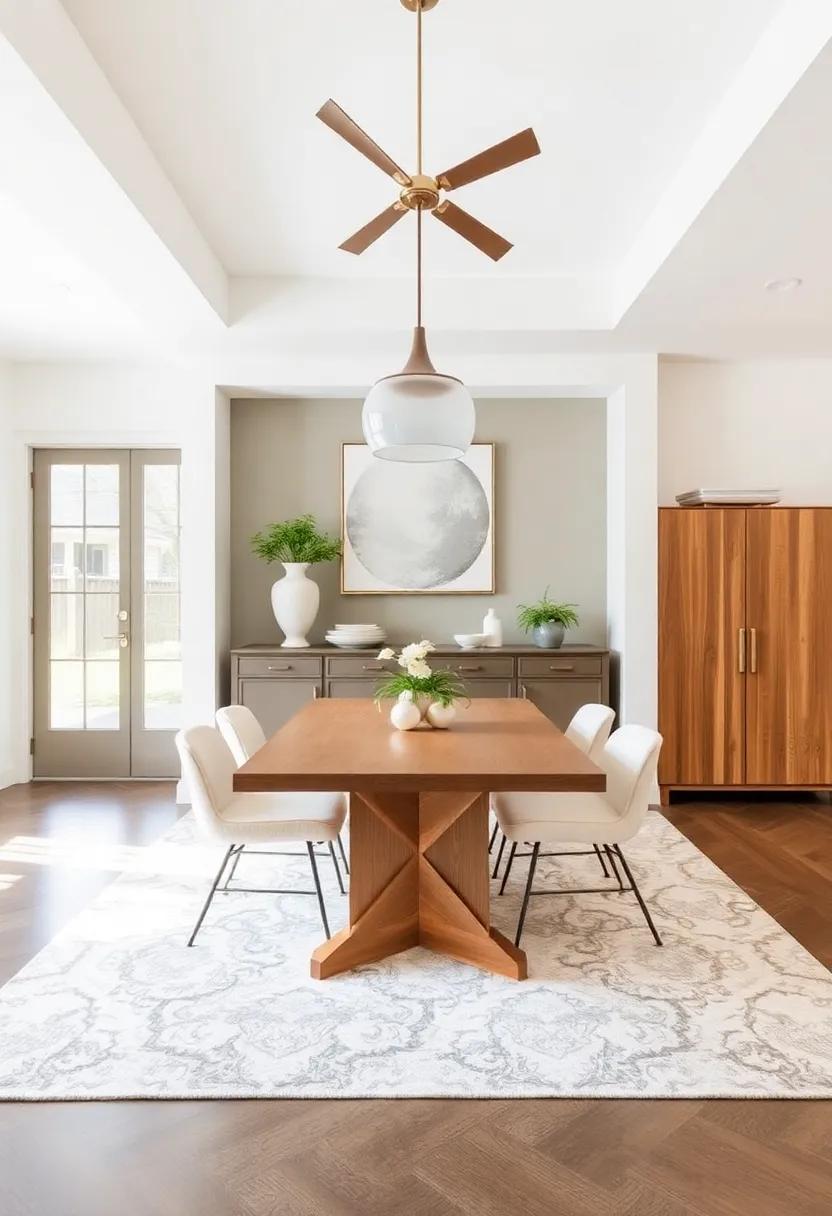
In the heart of a transitional dining room,craftsmanship reigns supreme,weaving a narrative of both history and modernity through its furniture pieces. Each item serves not just as functional decor but as an artistic statement that enhances the dining experience. Quality woodwork, intricate detailing, and thoughtful design converge to create a harmonious space where traditional and contemporary aesthetics coexist. From elegant dining tables with sleek lines to upholstered chairs that beckon comfort,these elements reflect a meticulous attention to detail that elevates any gathering. Key characteristics of this craftsmanship include:
- Durable Materials: Solid woods and premium fabrics that stand the test of time.
- Versatile Designs: Pieces that can seamlessly transition from casual to formal settings.
- Artisanal Touches: Handcrafted features, such as dovetail joints and intricate carvings.
the choice of color palettes further enhances the allure of transitional dining rooms. Soft neutrals and muted tones foster an inviting atmosphere while allowing the craftsmanship to shine. Each piece,whether it’s an aged oak table or a sleek glass buffet,plays a pivotal role in the overall design narrative. by blending these elements thoughtfully, homeowners can craft a dining space that not only reflects their personal style but also honors the artistry behind each furniture selection. Below is a simple overview of materials commonly used in crafting transitional dining room furniture:
| Material | Characteristics |
|---|---|
| Wood | Timeless, strong, and varied in finishes |
| metal | Sleek, modern contrast, frequently enough used for accents |
| Fabric | Softens the space; available in many colors and textures |
| Glass | Creates an airy feel; enhances light |
Creating Zones within an Open Dining Space for Comfort and Functionality
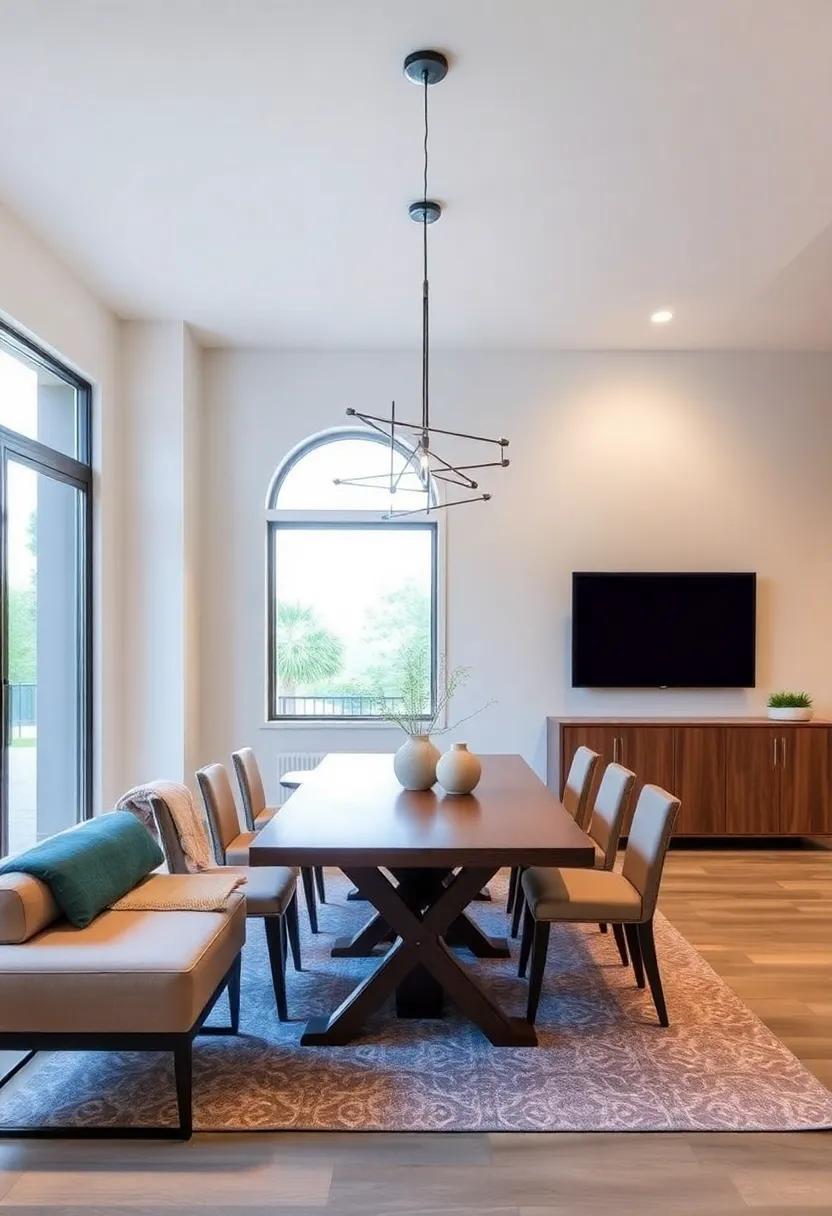
In an open dining space,successfully creating distinct areas enhances both comfort and practicality. Start by selecting key furnishings that serve a dual purpose; as an example, a long dining table can also function as a buffet or serving space during gatherings. Use rugs to visually separate dining areas from adjacent living or kitchen spaces, grounding the furniture while adding texture and warmth. Accent lighting,such as chandeliers or pendant lights,can further delineate zones,allowing for soft illumination that enhances the dining experience without feeling overly shining.
Consider incorporating screen dividers or lush greenery to foster a sense of privacy without entirely closing off spaces. This can be especially effective if your open layout serves multiple functions. Additionally, think about the flow of movement; ensure there are clear paths between zones to maintain functionality. When planning your layout, you might find it helpful to observe the following table for ideas on integrating different zones seamlessly:
| Zone Type | Suggested Elements |
|---|---|
| Dining Area | Large table, stylish chairs, overhead pendant lighting |
| Relaxation Nook | comfortable sofa, coffee table, soft throw pillows |
| Serving Station | buffet or sideboard, decorative tray, essential serving utensils |
Sustainable Practices in Creating Elegant Transitional Dining environments

In today’s world, where sustainability intersects with design, incorporating eco-kind materials into your transitional dining space can elevate both its aesthetic appeal and environmental impact. Consider using reclaimed wood for tables and chairs, which not only adds character but also ensures that no new trees need to be cut down. Additionally, natural fibers such as jute or cotton for upholstery choices can enhance comfort while minimizing the carbon footprint. By integrating energy-efficient lighting options like LED fixtures, you not only save on energy bills but also create warm, inviting atmospheres that blend with the elegant transitional style.
Incorporating sustainable practices also extends to sourcing local produce for dining elements, promoting the farm-to-table philosophy. This not only supports local economies but also ensures that your meals are fresh and seasonal. Moreover, accentuating your dining space with indoor plants like succulents or ferns can improve air quality, creating a healthier environment for your family and guests alike. Explore these elements as a holistic approach to designing a dining area that speaks to both timeless elegance and modern-day duty.
Incorporating Technology: Modern Influences in Transitional Dining Decor
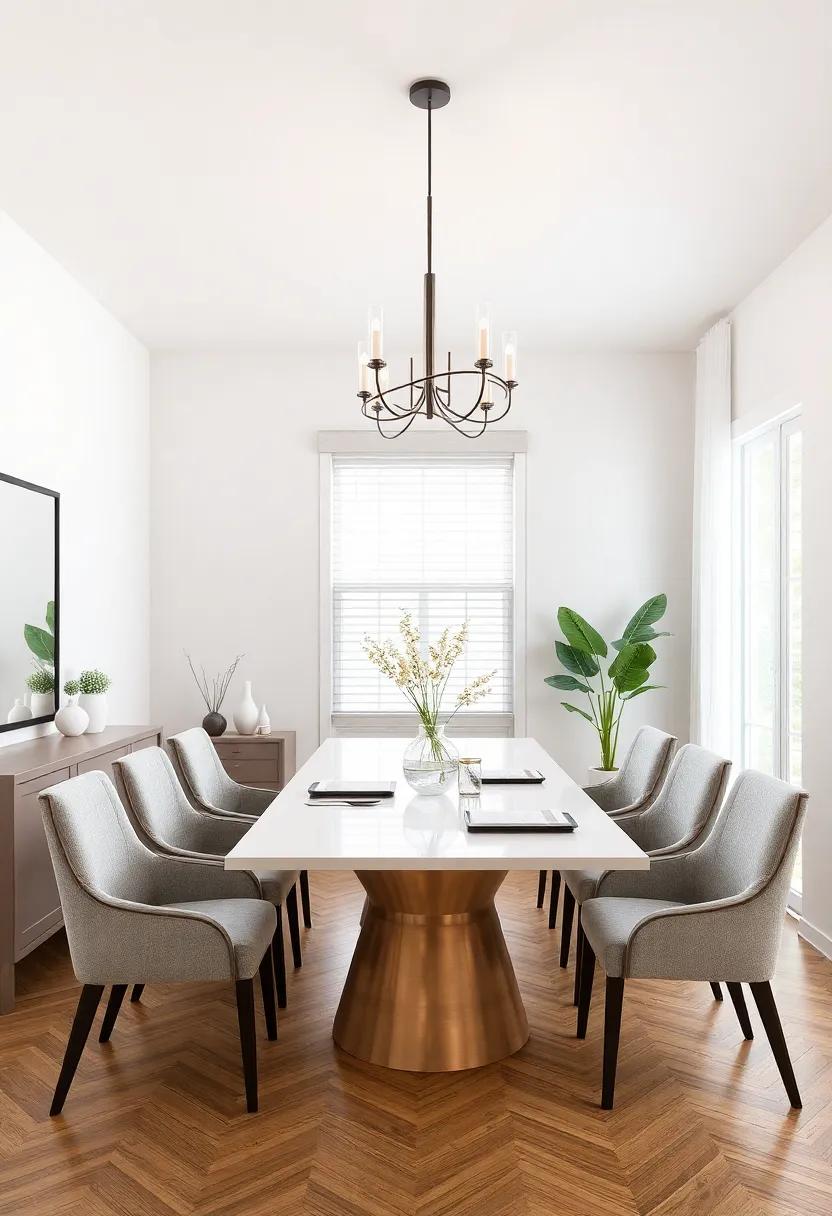
Today’s dining spaces are evolving to reflect the seamless integration of technology into our daily lives,enhancing both functionality and aesthetic appeal. Smart home devices play a pivotal role in this transformation, effortlessly combining style with modern conveniences. Imagine a dining room illuminated by smart lighting systems that allow you to adjust brightness and color with a simple voice command. For those who enjoy culinary experiences, smart kitchen appliances can interface directly with your dining space, ensuring that your culinary creations impress your guests. Elements like integrated sound systems can also create the perfect ambiance, making every meal a memorable occasion.
Incorporating technology doesn’t mean sacrificing the timeless elegance characteristic of transitional decor; instead, it’s about creating an environment where modern amenities coexist with classic charm. Key elements to consider include:
- Wireless charging stations embedded in side tables or console units, merging convenience with design.
- Customizable digital art frames that can showcase a rotating collection of art, allowing for personal expression.
- Smart temperature control systems that ensure optimal comfort during family dinners or gatherings.
| Tech Element | Functionality |
|---|---|
| Smart Lighting | Adjustable brightness and color |
| Audio Systems | Cohesive sound throughout the space |
| Smart Thermostats | Maintain ideal room temperature |
By thoughtfully incorporating these advanced features, you can create a transitional dining environment that not only honors classic design principles but also embraces the innovations that define contemporary living. The goal is to enhance the dining experience,turning each meal into a festivity of both culinary and design artistry,where tradition meets the future.
The Fusion of Cultures: Global Inspirations for Transitional Dining Rooms
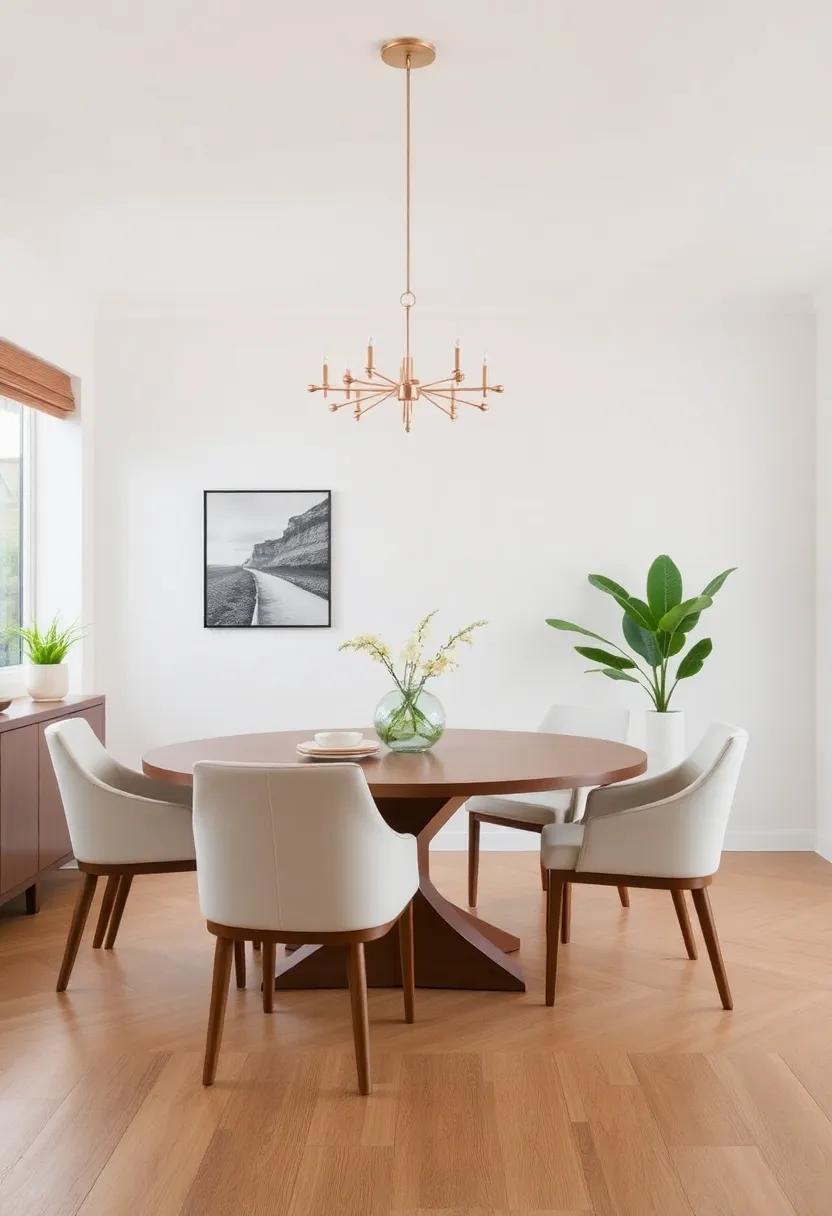
In today’s world, where boundaries between cultures blur, the dining room has emerged as a canvas for blending diverse influences. Transitional dining rooms uniquely celebrate elements from various traditions while maintaining an elegant coherence. The vibrant colors and intricate patterns of Moroccan tiles paired with the sleek lines of Scandinavian furniture exemplify this fusion. Consider incorporating decorative accents that reflect global inspirations, such as:
- Handcrafted tableware from Japanese artisans
- Egyptian-inspired light fixtures for an exotic glow
- Rustic wood finishes that echo Mediterranean warmth
Furthermore, the layout of these spaces allows for both formal and relaxed gatherings, embracing the shared tradition of dining across cultures. Mixing different styles and eras, such as pairing a contemporary metal table with classic upholstered chairs, creates a dialogue within the room. To visualize this harmony, consider the following table that illustrates various style combinations and their global origins:
| Style Combinations | Global Origin | Key Elements |
|---|---|---|
| Chinoiserie Meets Modern Minimalism | China & scandinavia | Bold patterns, clean lines |
| Rustic Farmhouse with Asian Accents | USA & Japan | Natural wood, subtle textures |
| Industrial with Ethnic Textiles | Europe & Africa | Raw finishes, vibrant fabrics |
Choosing Statement Pieces: Elevating Dining Room Design with Bold choices

Incorporating statement pieces into your dining room design can dramatically transform the space, introducing a focal point that draws the eye. Consider furniture and decor that showcase unique shapes, vibrant colors, or unexpected materials. As an example:
- A striking chandelier: Opt for a modern geometric design or a vintage-inspired piece that adds glamour and warmth.
- An artisan dining table: Choose one with a bold finish or intricate craftsmanship to anchor the room.
- Accent chairs: add a pop of color or patterns with eclectic styles that contrast beautifully against a more neutral palette.
Equally meaningful is the layering of textures that complement your statement piece while contributing to a cohesive transitional style. Pair smooth, polished surfaces with rustic or worn elements to create depth. A well-thoght-out arrangement of items can further elevate your dining area. Such as:
| Element | Style Impact |
|---|---|
| Textured Fabrics | Adds warmth and coziness. |
| Glossy Surfaces | Creates an elegant, modern feel. |
| Natural Materials | Incorporates timeless authenticity. |
Crafting the Perfect Dining Experience: from Table Settings to Atmosphere
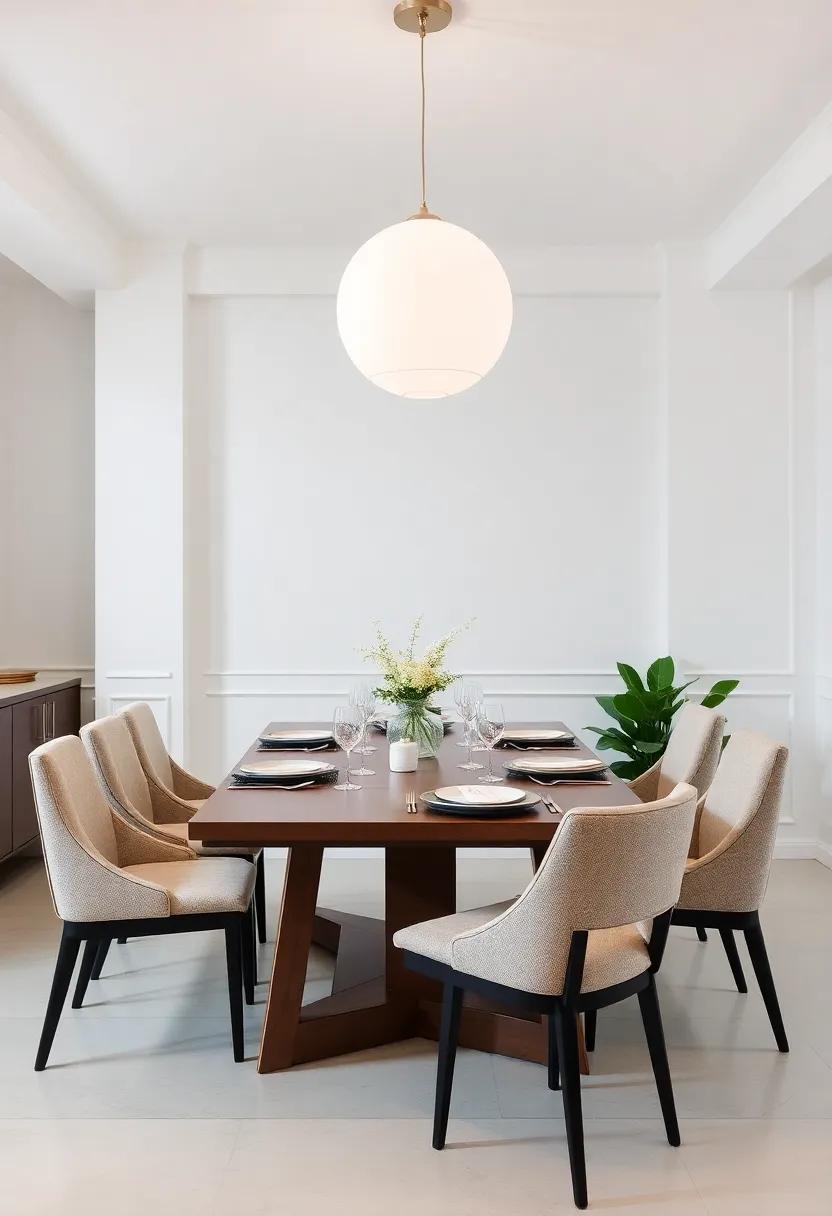
Creating a captivating dining experience involves more than just the food on the plate; it extends to every detail from the ambiance to the table settings. To craft a warm and inviting atmosphere, consider layering textures and colors that harmonize with the overall theme of your dining room. Elements such as linen tablecloths, elegant dinnerware, and carefully chosen cutlery serve to elevate the aesthetic. Introducing natural elements, like seasonal flowers or greenery, not only adds a pop of color but also brings a breath of fresh air to the space. Lighting plays a pivotal role, so opt for soft, adjustable lighting to create intimacy, complemented by the gentle flicker of candles to enhance the mood.
When it comes to table arrangements, focus on creating a balance between functionality and style.Utilize a centerpiece that is not too tall, ensuring guests can converse easily while still admiring the décor. Consider including personalized touches, such as place cards or small favors, which provide a sense of warmth and thoughtfulness. Here’s a simple way to approach your table setting:
| Layer | Description |
|---|---|
| Base Layer | Tablecloth or runner that aligns with the color scheme. |
| Dinnerware | Choose plates that enhance the meal presentation. |
| Glassware | Variety of glasses for water, wine, and specialty drinks. |
| cutlery | Ensure that pieces are polished and positioned correctly. |
| Centerpiece | Seasonal flowers or a decorative item that complements the theme. |
Designing for Conversation: Arranging Your Transitional Dining Room for Connection

Creating a dining room that encourages conversation is an art that combines strategic furniture arrangement and thoughtful decor choices. Start by positioning your dining table as the focal point of the room,ensuring it’s the right size for the space to promote intimacy. Consider using a round or oval table, as they invite a more inclusive atmosphere, allowing everyone to engage with one another easily. Additionally, incorporate comfortable seating options, such as upholstered chairs or a mix of bench seating, to foster relaxed interactions. Enhance the surroundings with layered lighting to set the mood; consider a stunning chandelier or pendant lights above the table to draw the eye and create warmth.
To further encourage connection, pay attention to the decor elements and color palette that can enhance the overall vibe. Soft, muted tones can make a space feel welcoming, while contrasting textures—like a polished table, soft fabrics, and rustic finishing touches—can add depth and interest. Incorporate personal touches such as family photos or meaningful art pieces that can serve as conversation starters. Lastly,don’t overlook the importance of strategic layout; leave enough space for movement while maintaining a cozy,inviting feel that keeps the focus on your guests.
To Wrap It Up
As we conclude our exploration of transitional dining room styles, it becomes clear that this design approach transcends fleeting trends, offering a perfect harmony of the old and the new.The seamless blend of classic elegance with contemporary flair creates spaces that are not only visually appealing but also deeply personal and inviting.Whether you prefer refined sophistication or a more relaxed ambiance, the transitional style invites you to celebrate your unique aesthetic.As you embark on your own dining room journey, remember that it’s not just about the furniture or the décor, but the stories and memories that unfold around the table. Embrace the versatility of transitional design, allowing your space to evolve with you while maintaining its timeless charm. your dining room will stand as a testament to your journey—an elegant backdrop for cherished moments shared with family and friends. So, gather around, and let the beauty of your dining space inspire conversations and connection for years to come.
As an Amazon Associate I earn from qualifying purchases.
